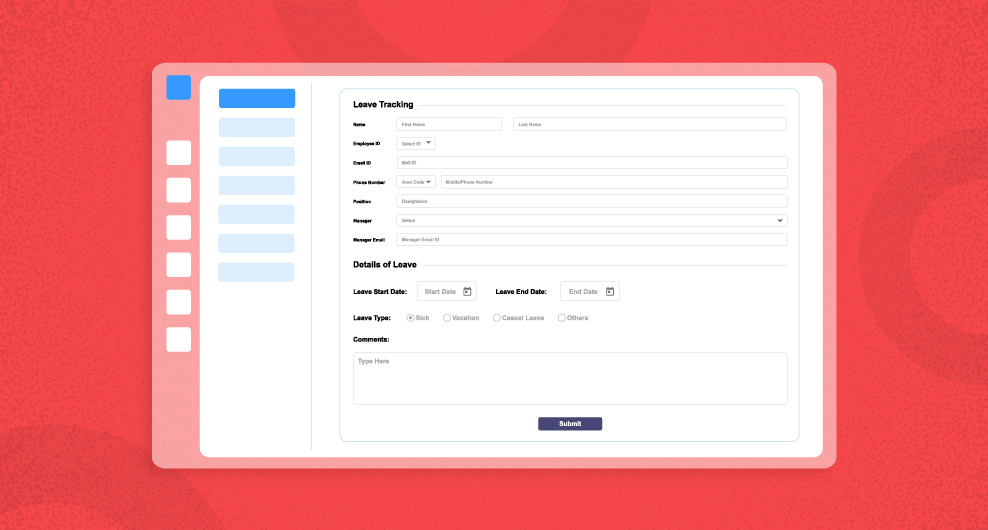Table of Contents
In the dynamic landscape of modern business, efficiency is a key driver of success. One of the transformative tools ushering in a new era of productivity is form automation, notably empowered by a drag and drop form builder.
This article delves into the realm of optimizing productivity through automated form processing, exploring the impact of no-code form builders, document automation, and workflow optimization on business processes.
How Does Automation Improve Productivity
Automation boosts productivity by saving time, reducing errors, and optimizing workflows. It ensures consistency, enhances scalability, and improves resource allocation. With faster response times, accurate data, and task parallelization, businesses can deliver an enhanced customer experience.
Automation adapts to change, providing cost savings through reduced labour costs and efficient resource utilization. In essence, automation streamlines operations, allowing organizations to achieve more with increased efficiency and strategic deployment of human resources.
Enhancing Productivity Through Automated Form Processing
The Rise of Form Automation
Form automation has emerged as a cornerstone for businesses aiming to streamline processes and enhance productivity. No longer confined to traditional pen-and-paper methods, businesses now leverage digital solutions that offer efficiency and speed in data collection and processing.

The Power of No-Code Form Builders
No-code form builders empower users with varying technical backgrounds to create and modify forms effortlessly. The drag-and-drop functionality simplifies the form design process, eliminating the need for coding expertise. This accessibility not only saves time but also fosters a more collaborative and agile environment within organizations.
Enhancing Customer Experience
A seamless and user-friendly web form is crucial for a positive customer experience. No-code form designers enable businesses to create intuitive and visually appealing forms that enhance user engagement. From online surveys to feedback forms, businesses can leverage automation to collect and process customer input efficiently.
Document Automation for Efficiency
Beyond data collection, form processing extends to document automation. Businesses can automate the creation, distribution, and document management, reducing manual errors and expediting workflows. This not only saves time but also ensures consistency in document generation, bolstering overall productivity.

Streamlining Workflow Automation
Integration with workflow automation tools like Yoroflow’s Workflow Management further amplifies the impact of form automation. Approval workflows, triggered by form submissions, can be automated to move seamlessly through organizational processes. This not only reduces bottlenecks but also ensures that tasks progress efficiently through predefined channels.
Transformative Business Process Automation
Form automation serves as a catalyst for broader business process automation initiatives. By automating repetitive and time-consuming tasks through streamlined forms and workflows, businesses can optimize their operations, allowing teams to focus on strategic initiatives that drive growth.
The Role of User Engagement
No-code form builders contribute to increased user engagement by allowing teams to quickly adapt to changing requirements. This adaptability ensures that forms remain relevant and effective, fostering a culture of continuous improvement and responsiveness to evolving business needs.
Data Security in Form Processing
As businesses transition to digital forms, ensuring the security of sensitive information becomes paramount. No-code form builders often come equipped with robust security measures, safeguarding customer and organizational data throughout the form processing lifecycle.
Adapting to Evolving Requirements
Business landscapes evolve, and so do the requirements for data collection and processing. No-code form builders provide the flexibility to adapt forms swiftly to changing business needs, enabling organizations to stay agile in the face of dynamic market conditions.
Analytics for Informed Decision-Making
Form automation tools often come equipped with analytics capabilities, providing insights into form completion rates, user behaviour, and other key metrics. This data-driven approach empowers businesses to make informed decisions, optimize forms, and enhance overall efficiency.
Improving Collaboration Across Teams
No-code form builder software facilitates collaboration across teams by providing a centralized platform for form creation and modification. This collaborative environment ensures that all stakeholders can contribute to the development and improvement of forms, fostering a sense of shared responsibility.
Future-Proofing with Scalable Solutions
As businesses grow, the scalability of form automation solutions becomes crucial. No-code form builders offer scalable options that can adapt to the increasing demands of a growing organization, ensuring that automated form processing remains an asset in the long term.
Conclusion
Optimizing productivity through automated form processing is not just a modern convenience but a strategic necessity for businesses aiming to stay competitive. From enhancing customer experience to streamlining workflows and enabling data-driven decision-making, the impact of form automation is far-reaching.
Embracing these technologies positions organizations to not only meet the challenges of today but also to navigate the complexities of tomorrow’s business landscape with efficiency and agility.




